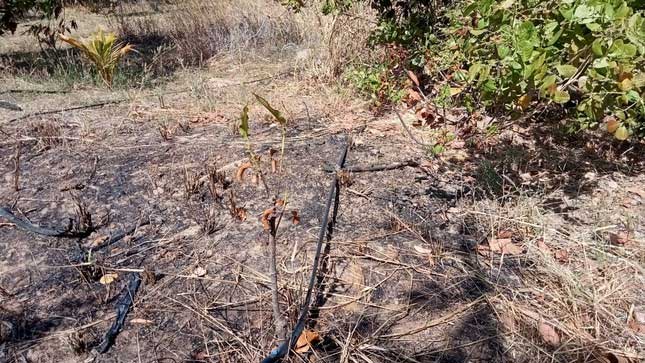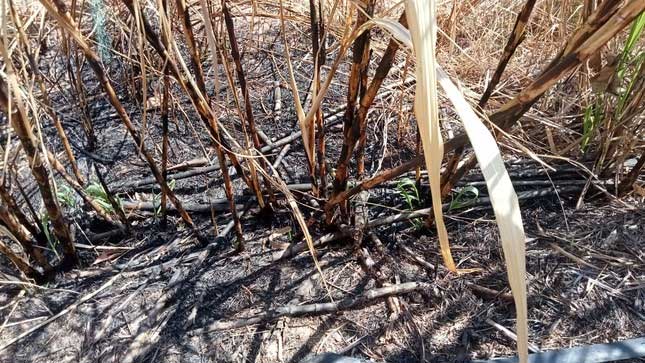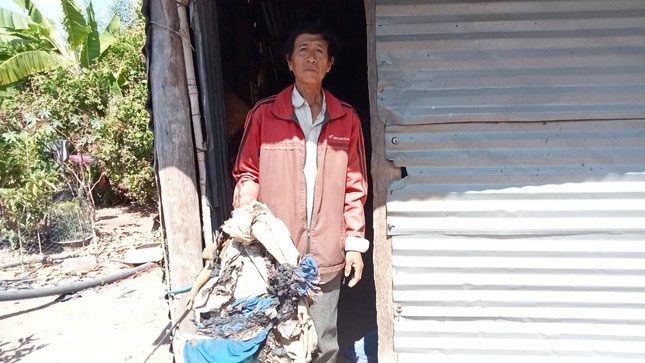On February 2, the People’s Committee of Dak Lak Province issued directives regarding the unusual phenomenon of “spontaneous combustion” that recently occurred in Trung Hamlet, Ia Lop Commune, Ea Sup District.
Accordingly, the provincial People’s Committee has assigned the provincial police to lead and coordinate with relevant agencies and units to investigate and clarify the cause of this unusual phenomenon, following a request from the Ea Sup District People’s Committee.

The “spontaneous combustion” phenomenon in Ia Lop Commune.
Previously, the district reported that the “spontaneous combustion” phenomenon in Trung Hamlet, Ia Lop Commune was complex and had never been seen in the area, with the nature of the incident exceeding the analytical capabilities and expertise available at the district level.
To ensure the safety of people’s lives and property and to stabilize the political and security situation in the area, the Ea Sup District People’s Committee requested the provincial People’s Committee to consider assigning relevant departments and sectors to coordinate with the district to investigate and clarify the cause of the unusual “spontaneous combustion” phenomenon.

The spontaneous combustion phenomenon occurred in the garden of Mr. Le Van Ben.
Previously, after noting the occurrence of a spontaneous combustion phenomenon in the garden of Mr. Le Van Ben (born 1962, residing in Trung Hamlet, Ia Lop Commune), the Ea Sup District Police directed specialized forces to inspect, examine, and analyze the scene.
Upon inspection, an area of 10,000 square meters of cashew cultivation was found to be burned, with 23 combustion points identified on the ground. Examination of these combustion points revealed signs of charring on grass, leaves, and dry cashew branches, with varying degrees of charring. Some combustion points showed black plastic water pipes that had been affected by heat, resulting in burning and deformation.
According to the inspection results, the largest combustion point measured 6×4.5m; the smallest measured 0.6×0.4m, with average distances between combustion points ranging from 3.5 to 20 meters. The positions of the combustion points were scattered throughout the cashew growing area, forming a long streak from northwest to southeast.
The Ea Sup District Police also took statements from the landowner and collected six soil samples from areas that experienced combustion and areas that did not. Mr. Ben reported that the spontaneous fires occurred continuously from 11 AM to 6 PM, at various locations within the family’s cashew field. The time and frequency of the fires gradually decreased as the hours progressed, ceasing entirely by 6 PM. Since January 14, the phenomenon of “spontaneous combustion” has not recurred.

Mr. Ben next to the pile of clothes burned due to the “spontaneous combustion” phenomenon.
After examining the scene and taking statements from the landowner, law enforcement agencies concluded that the cause of the combustion may be due to chemicals naturally present in the soil or remnants of explosives from the war, which, under suitable conditions, could undergo a chemical reaction that generates heat and light (causing combustion). This phenomenon only occurred in specific areas of Mr. Ben’s cashew field and did not repeat in previously burned locations.
Identifying this as an unusual phenomenon, law enforcement collected six soil samples from two areas where combustion occurred and one area where it did not. Therefore, to conclude the phenomenon, the Ea Sup District Police proposed to the provincial police leadership to assign the Ea Sup District Police to lead and contact relevant units to conduct sample testing as required.
Additionally, the district police proposed that the Chairman of the Ea Sup District People’s Committee invite scientists and experts to conduct soil inspection and analysis in the area where the “spontaneous combustion” phenomenon occurred and surrounding areas… thus allowing for scientific analysis and evaluation to draw accurate conclusions.
|
As reported by the press, Mr. Le Van Ben (born 1962, residing in Ia Lop Commune) reported to the authorities that his family’s garden suddenly caught fire for unclear reasons. Specifically, from January 11 to 13, multiple small spontaneous fires appeared on the ground at over 20 different locations in Mr. Ben’s garden. Some fires near the garden hut burned some of the family’s clothes. In response to this bizarre phenomenon, residents suspected that it was due to chemicals left over from the war, igniting due to the hot weather. |


















































